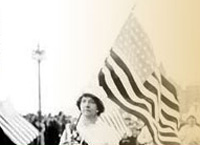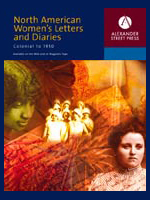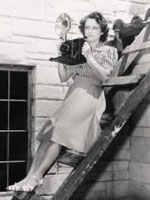National Women's History Project

Introduces the National Women's History Project, "a non-profit organization dedicated to recognizing and celebrating the diverse and historic accomplishments of women by providing information as well as educational material and programs." Includes a 5,000-word essay on the history of the women's rights movement and a 7,000-word timeline. The site gives detailed information about the organization's activities, including efforts to bring women's history into public life, a list of curricular ideas for teachers, material concerning National Women's History Month, and a 15-question quiz on Women's History.
Perhaps most valuable, the site furnishes approximately 200 partially annotated links, arranged into 12 broad categories such as "Politics," "World History," and "Math and Science." Though lacking in primary source material, this site provides useful beginning resources for the study and practice of women's history.


